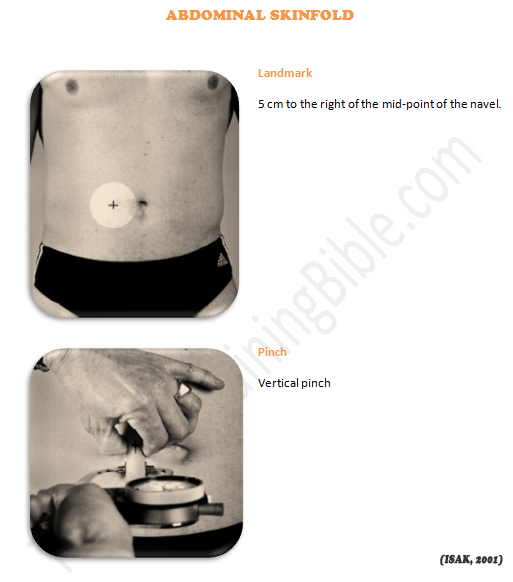Before you read this article, check out the other in the Performance Testing series, including Part 1: The Fundamentals of Testing; Part 2: Psychological tests, and Part 3: Flexibility.
Body size refers to things like your weight, height, body mass index (BMI) and the circumference of various limbs (i.e. chest, arms). Body composition refers to the distribution of fat and lean muscle tissue around your body. Because MMA is a weight class sport, it is essential that fighters and coaches are familiar of the most common methods to assess body size and composition.
This part of the article is meant to provide you with a simple overview of measures of body size and composition. Because a high level of skill and precision is required to accurately measure both, The MMA Training Bible recommends that you find a suitably trained individual to perform them for you. If you are interested in learning more about this field of science or perhaps gaining certification, refer to the official website of The International Society for Advanced Kinanthropometry. The remainder of this article will provide a simple overview of common measures of body size and composition.
Body size is an important factor that can determine performance in MMA. Typical measurements include body mass, the circumference of limbs, bone breadths and limb lengths. Circumference measures of the chest, waist, arms and legs are particularly useful in tracking muscular development across your fight plan.
In order to measure body mass, you’ll need access to weighing scales. When performing these measures, try to use the same scales every time and make sure they are calibrated appropriately. You should also allow for the weight of clothing by either removing it before hand, or weighing it separately and subtracting it from the total weight. As one litre of water weighs 1 kg, you’ll need to make sure that participants are not over or under hydrated when the measure is taken. To measure height (cm or m), use a simple measuring tape.
Another frequently used measure of body size is the body mass index (BMI), which can be easily calculated by dividing your body mass (kg) by your height (m2) (BMI = kg/m2). For example, a 70 kg individual with a height of 1.7 m (which equals 2.89 m2 [i.e. 1.7 m x 1.7 m = 2.89 m2]) would have a BMI of 24.2, which is considered ‘normal’. Keep in mind that BMI does not consider body composition, so it may not be the most appropriate measure for the athlete population.
Body circumference can be a useful measure to track both muscular hypertrophy (muscles getting bigger) and fat loss across during training. In order to measure limb circumference, you’ll need measuring tape. Try to use a narrow (< 7 mm wide), but flexible and tough tape that doesn’t stretch. It should probably be at least 1.5 m long and it should read centimetres (cm) and millimetres (mm). Gulick anthropometric tape will do the trick.
Below are examples of circumferences that are commonly measured, along with a brief description of how the measure is taken. For more information, refer to official manuals from The International Society for Advanced Kinanthropometry.


Body composition refers to the absolute amount of fat and non-fat tissue within the body. Fat mass is the total mass of all fat within the body and fat-free mass is the total mass of all tissues within the body, excluding fat. The percentage of body fat is the ratio of fat mass to fat-free mass.
There are many ways to have your body composition assessed and some are more complicated and expensive than others. For example, pinching the skin with skinfold callipers is a very common method that can be quite reliable if done by an experienced practitioner, although the best way to measure body fat is by using an expensive underwater hydrostatic weighing system. The MMA Training Bible advises you to have your body composition evaluated before and throughout your fight plan by a suitably trained practitioner.
Skin fold calipers are used to pinch folds of your skin. Calipers come in many formats, some more expensive than others; however, they require regular and careful calibration in order to ensure the accuracy of measurement. Here is an example of what they look like.

Below are examples of some of the more common skin fold measures that are taken, along with a brief description of how to precisely take the measure. For more information, refer to official manuals from The International Society for Advanced Kinanthropometry (ISAK, 2001).








Below you will find an example of a typical data collection sheet that can be used in conjunction with all of the previously described measures. Feel free to download your own copy of the accompanying data collection sheets, along with all of the measures previously described.

You might notice that the percentage of body fat is not listed in the table below. Although most people like to talk about the % body fat, many scientists feel that it is not as accurate a measure of body composition as the skin fold measure. This is because a rather complicated formula is required to calculate % body fat. If you want to see for yourself, check out the research by Durnin & Womersley (1977). If you’re looking for a useful summary measure of total body fat, then consider adding together all of the skinfold measures into one number, you can call it ‘the sum of 8 skin folds’, as we have in the table.
Download the MMA Training Bible’s data collection book here. This will allow you to record your data and chart your progress on this test and all of the other tests described in this article series.
That’s it for this article, watch out for the next one on Muscular Power Testing.
Take Care,
Dr. Gillis

Leave a Reply